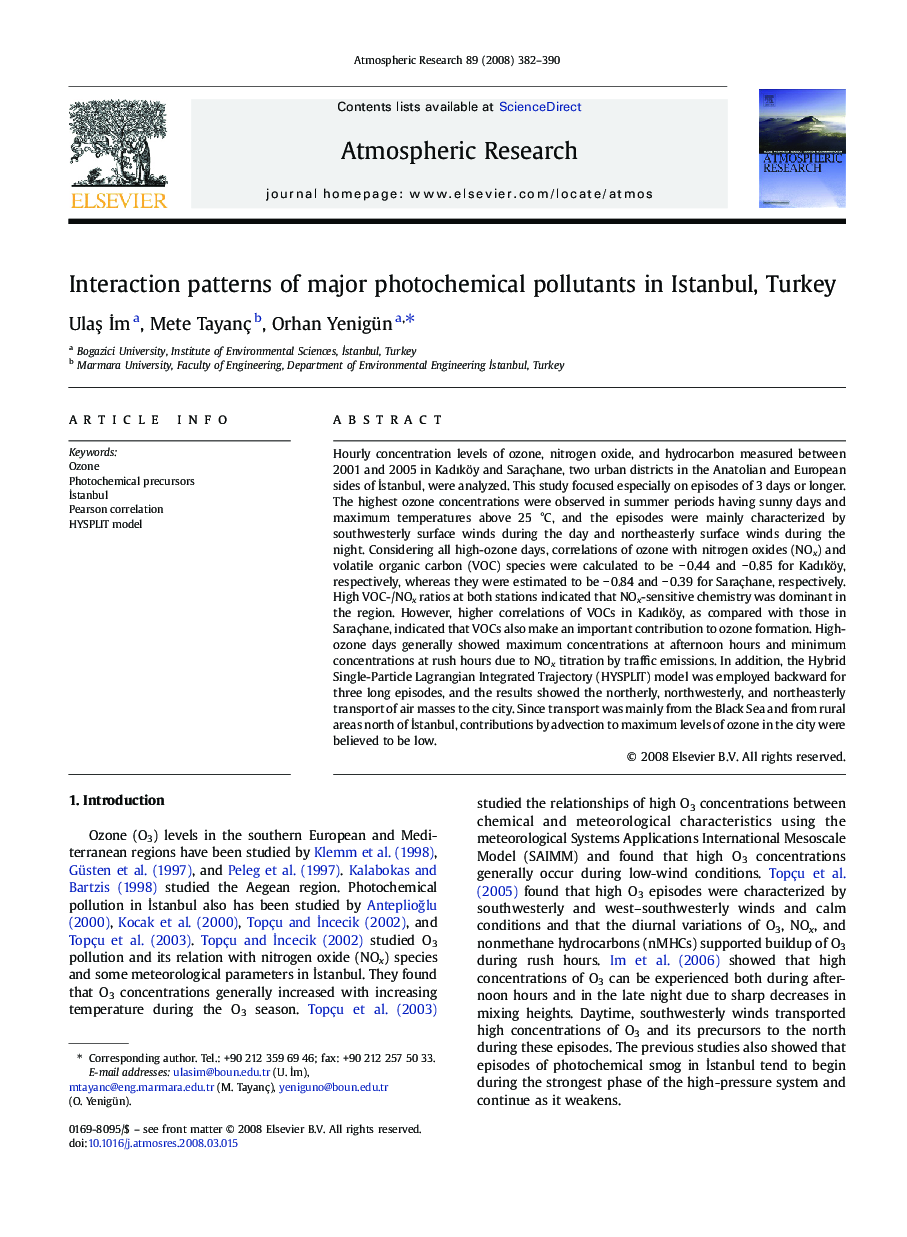| Article ID | Journal | Published Year | Pages | File Type |
|---|---|---|---|---|
| 4451119 | Atmospheric Research | 2008 | 9 Pages |
Hourly concentration levels of ozone, nitrogen oxide, and hydrocarbon measured between 2001 and 2005 in Kadıköy and Saraçhane, two urban districts in the Anatolian and European sides of İstanbul, were analyzed. This study focused especially on episodes of 3 days or longer. The highest ozone concentrations were observed in summer periods having sunny days and maximum temperatures above 25 °C, and the episodes were mainly characterized by southwesterly surface winds during the day and northeasterly surface winds during the night. Considering all high-ozone days, correlations of ozone with nitrogen oxides (NOx) and volatile organic carbon (VOC) species were calculated to be − 0.44 and − 0.85 for Kadıköy, respectively, whereas they were estimated to be − 0.84 and − 0.39 for Saraçhane, respectively. High VOC-/NOx ratios at both stations indicated that NOx-sensitive chemistry was dominant in the region. However, higher correlations of VOCs in Kadıköy, as compared with those in Saraçhane, indicated that VOCs also make an important contribution to ozone formation. High-ozone days generally showed maximum concentrations at afternoon hours and minimum concentrations at rush hours due to NOx titration by traffic emissions. In addition, the Hybrid Single-Particle Lagrangian Integrated Trajectory (HYSPLIT) model was employed backward for three long episodes, and the results showed the northerly, northwesterly, and northeasterly transport of air masses to the city. Since transport was mainly from the Black Sea and from rural areas north of İstanbul, contributions by advection to maximum levels of ozone in the city were believed to be low.
